The Best Science Books Of 2017
22:57 minutes
It’s been a bumpy road for science in 2017, and now’s a good time to reflect on what makes science so great: Stories of discovery and wonder, and the majesty of nature and space. From women codebreakers during WWII, to Oliver Sacks on consciousness, to a graphic novel about theoretical physics, there’s something for everyone on this year’s list of best science books. Maria Popova, founder of Brain Pickings, and Deborah Blum, director of the Knight Science Journalism program, join Ira to wrap up the best science books of 2017. Check out their picks below.
And don’t forget about the kids! We’ve curated a list of the best science books for children, complete with activities for when you’re finished reading…because it’s never too early to inspire the budding scientists in your life.
The River of Consciousness, by Oliver Sacks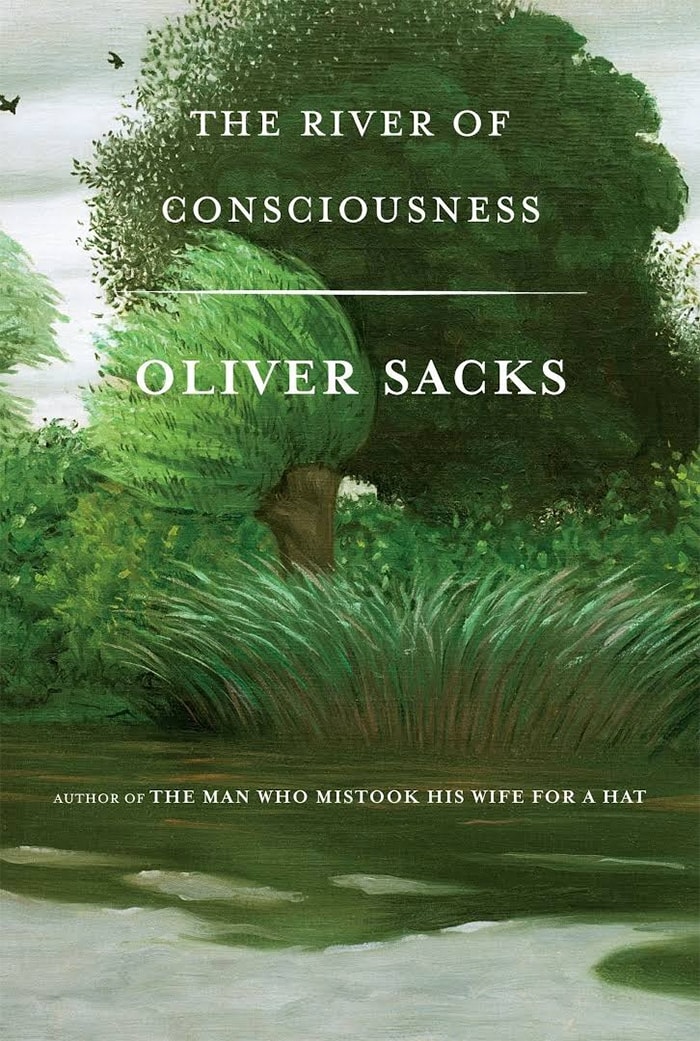
In this posthumous collection of Oliver Sacks’s essays, including many never before published, his warm genius comes alive as he tackles everything from memory to Darwin’s love of flowers to Freud’s little-known contributions to neurology to the nature of creativity. In his signature Sacksian way, he gets at the universal through the deeply personal—not only with case studies of his patients, as he has done so beautifully for nearly half a century across his books, but this time with the case study of his own self as his body goes through the process of aging and eventually dying. Sacks brings the friendly curiosity for which he is so beloved to this ultimate testing ground of character, emerging once more as the brilliant, lovable human he was.
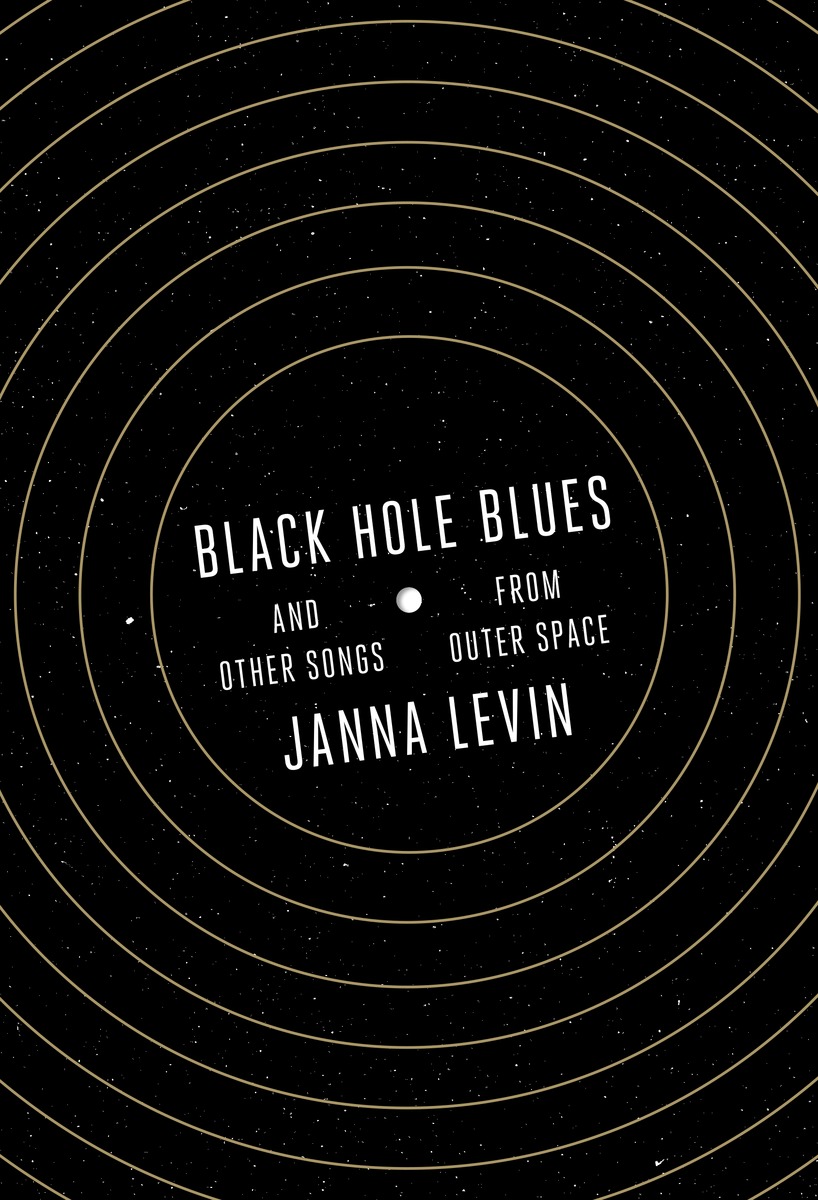 Black Hole Blues, by Janna Levin
Black Hole Blues, by Janna Levin
This definitive chronicle of the quest to hear the sound of spacetime—the landmark detection of gravitational waves that won the 2017 Nobel Prize in Physics—is one of those rare achievements where a science book enchants not only with the thrill of its subject, but with the splendor of its prose. One of the world’s preeminent astrophysicist, Levin is also a masterly novelist who brings her gift as a literary artist to the greatest scientific leap in our understanding of the universe since Galileo first pointed his crude brass telescope at the sky. On her pages, each of the scientists involved in this colossal half-century climb comes alive with Dostoyevskian insight into character, revealing what a profoundly human endeavor science is and how inseparable its triumphs are from the personal flairs and foibles of its practitioners.
Read more on Brain Pickings, listen to Janna Levin on SciFri, and read an excerpt.
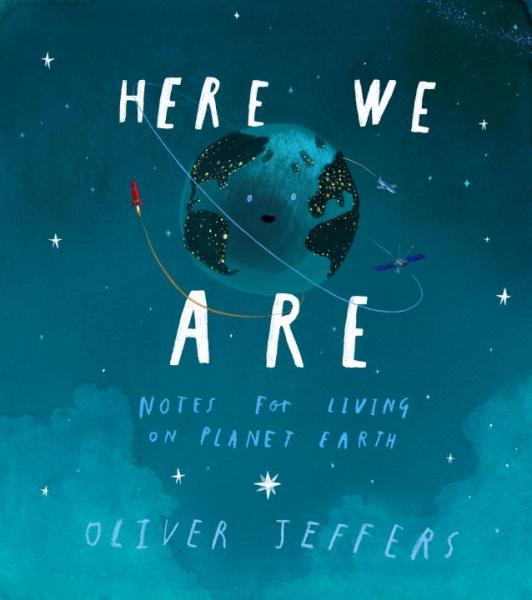 Here We Are: Notes For Living On Planet Earth, by Oliver Jeffers
Here We Are: Notes For Living On Planet Earth, by Oliver Jeffers
From one of the great visual storytellers of our time comes a lovely primer on our place in the universe and a tender reminder that we share this precious Pale Blue Dot. It is Jeffers’s most personal picture-book yet, dedicated to his own firstborn child. With expressive illustrations and spare, warm words, Jeffers extends an invitation to all humans, new and old, to fathom the beautiful unity of beings, so gloriously different, orbiting a shared Sun on a common cosmic voyage. Taking an approach evocative of the iconic Powers of Ten film by Charles and Ray Eames, he zooms from the Solar System to Earth to the city’s living kaleidoscope of inhabitants to the single home where a newborn is meeting the world for the first time, illustrating the intricate interconnectedness of life across all scales of existence. In the final pages, we see the new father embrace his cocooned child as the whole of humanity stretches into infinity in a colorful waiting line of helpers, reminding us that it takes a village—our global village—to nurture any one life on Earth.
See spreads from the book on Brain Pickings.
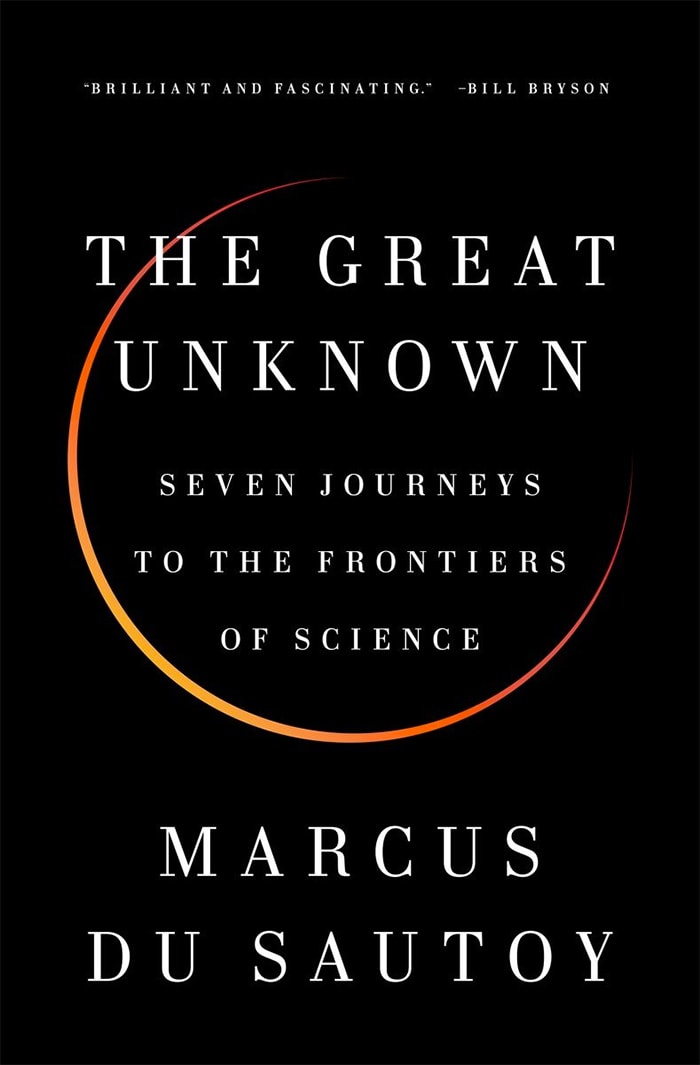 The Great Unknown, by Marcus du Sautoy
The Great Unknown, by Marcus du Sautoy
English mathematician Marcus du Sautoy, who serves as chair for the Public Understanding of Science at Oxford University, explores the puzzlement and promise of seven grand scientific questions that are currently unanswered but are, in theory, answerable. He terms them “edges,” marking horizons of knowledge beyond which we can’t currently see—from consciousness to the complexities of chaos to the nature of dark matter to whether the universe is infinite or finite, or whether it is even a universe or a multiverse. In this age of aggressive certitudes, how refreshing and needed to be reminded of the beauty and value of the unknown, where our primary frontier of growth as a civilization lies.
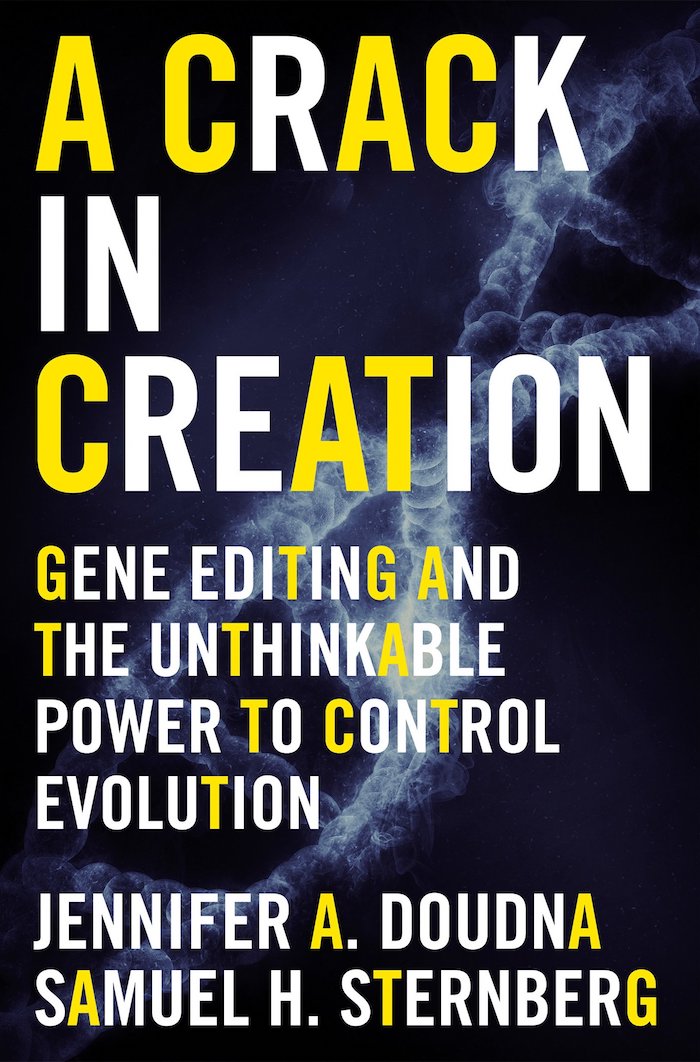 A Crack in Creation, by Jennifer Doudna and Samuel Sternberg
A Crack in Creation, by Jennifer Doudna and Samuel Sternberg
Only a century and a half after Darwin illuminated evolution by natural selection and a little more than half a century since the discovery of the molecular structure of DNA, the genome of virtually every living creature has become as editable as this sentence, thanks to CRISPR/Cas9. From the co-inventor of this startling new technology, rife with promise and peril, comes a lucid yet refreshingly optimistic look at what gene editing holds for medicine, ethics, and the very question of what it means to be human.
Listen to Jennifer Doudna on SciFri and read an excerpt.
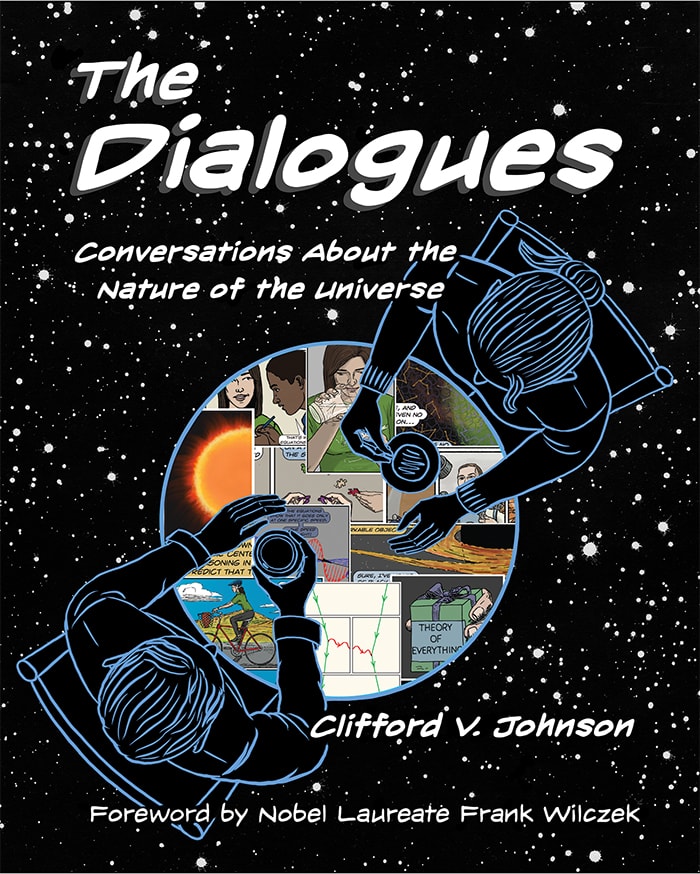 The Dialogues: Conversations about the Nature of the Universe by Clifford Johnson
The Dialogues: Conversations about the Nature of the Universe by Clifford Johnson
In his revolutionary treatise Dialogue Concerning the Two Chief World Systems, Galileo employed the ancient rhetorical device of dialogue to reconfigured our understanding of the universe and our place in it. Four centuries later, the English theoretical physicist Clifford Johnson turns to the same device in a most unusual and original graphic novel—or, rather, book-length comic of cosmic nonfiction—to explore some of the most fascinating subjects of modern science, from black holes to quantum electrodynamics to the multiverse theory. Johnson took a semester off of teaching to learn to draw and illustrated the book himself.
Read more and see illustrations from the book on Brain Pickings.
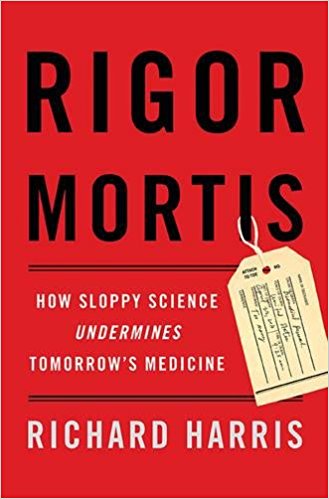 Rigor Mortis, by Richard Harris
Rigor Mortis, by Richard Harris
A thoughtful, deeply researched, and clearly written look at the some of the troubling issues in science today, from reproducibility issues to fraud. The many fascinating and troubling examples make this compelling reading, but the book is not merely a slam on science but an eloquent call for improving some of its flaws.
Listen to Richard Harris on SciFri and read an excerpt.
This is a riveting story of the women who were unsung heroes of American code-breaking work during WWII, some of whom solved some of the most daunting challenges of German and Japanese cypher work and most of whom never received any credit for it. Mundy clearly explains the mathematical reasoning behind the secretive codes and the technological designs of cypher machines as well. It’s a smart history of technology and of war, and an inspiring human story.
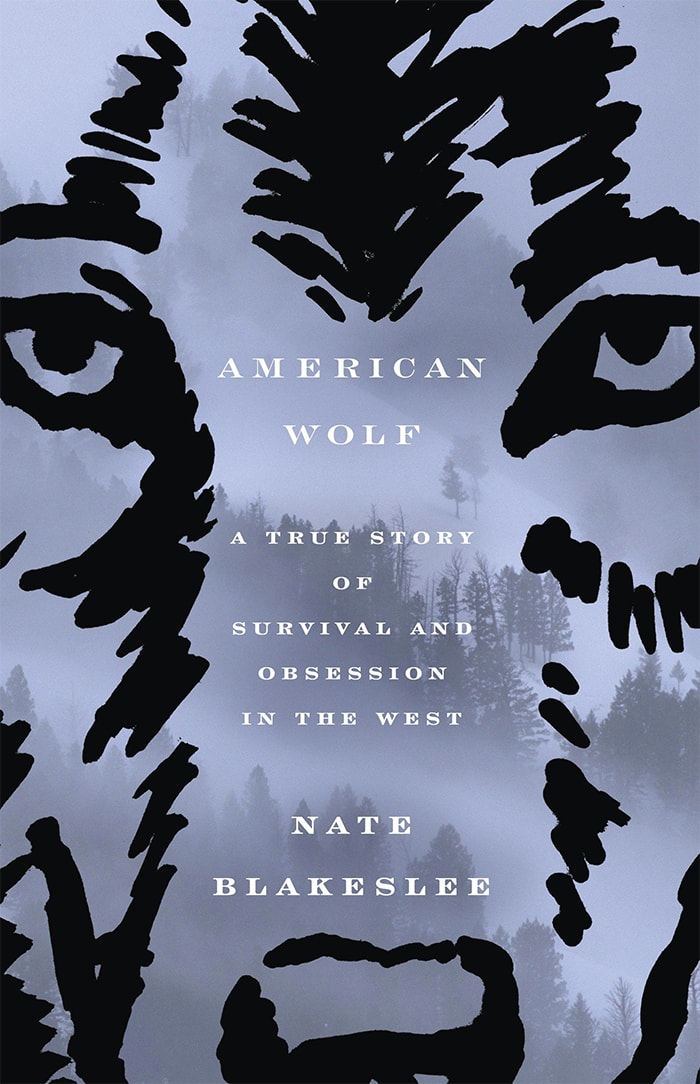 American Wolf, by Nate Blakeslee
American Wolf, by Nate Blakeslee
A brilliant narrative telling the reintroduction of wolves into Yellowstone National Park, in which author explores both the natural history of the animals and the western environment and the controversy around bringing the back. The book is a vivid portrait of scientists, hunters and wolves themselves in all their complexity and the story is both absorbing and, at times, heartbreaking.
[Be mighty, and rock a water bear tee.]
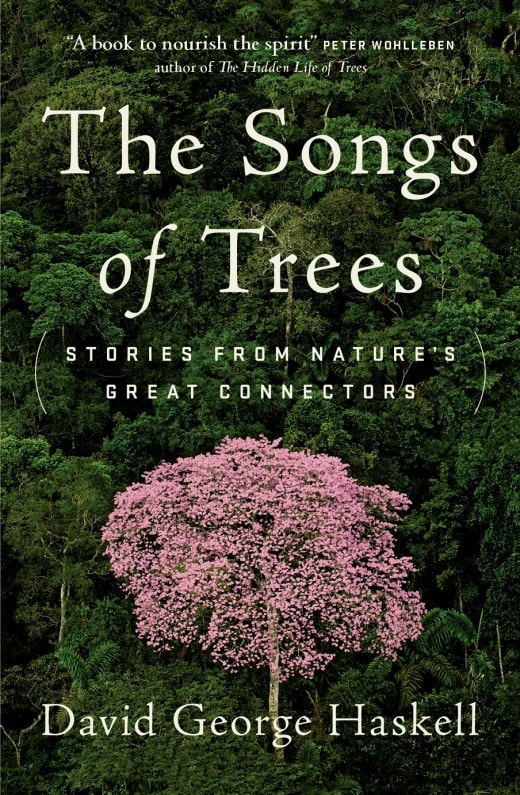 The Songs of Trees, by David George Haskell
The Songs of Trees, by David George Haskell
The author, a professor at the University of the South, is one of the finest writers of natural history working today. And the book is both a love song to trees, an exploration of their biology, and a wonderfully philosophical analysis of their role they play in human history and in modern culture.
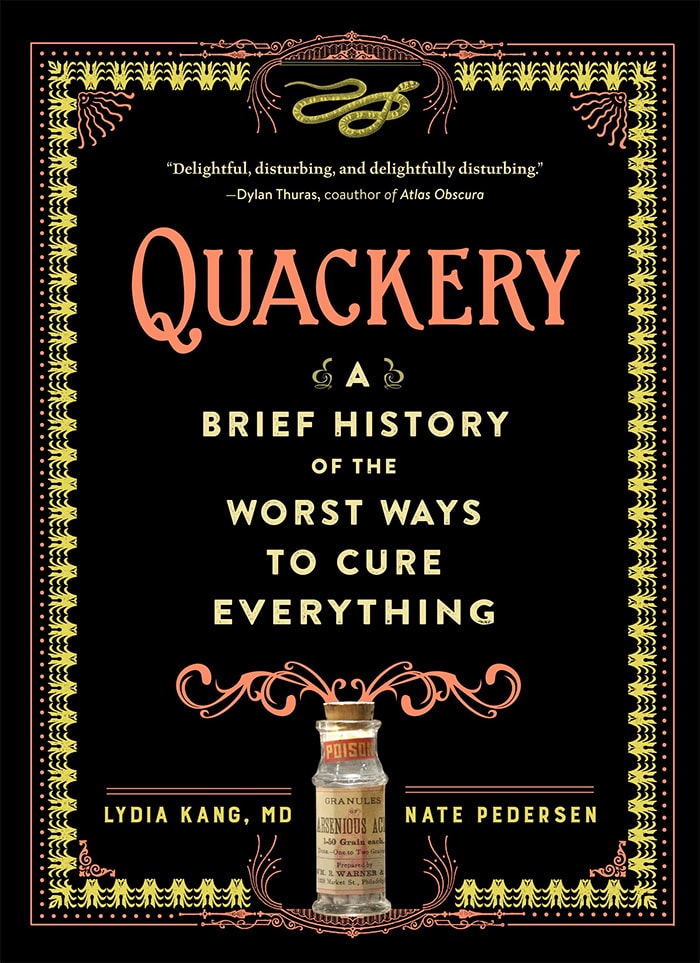 Quackery, by Lydia Kang and Nate Pederson
Quackery, by Lydia Kang and Nate Pederson
This is a fast-moving, detailed, and often horrifying look at the human history of medical oddities and scientific curiosities. The co-authors are Lydia Kang, a practicing MD and a successful novelist, and Nate Pederson, an Oregon-based historian and librarian, and they definitely have a lot of fun with the material. But the book also is an insightful look at human hubris in the story of would-be cures of all our ailments.
This book, a winner of the Studs and Ida Terkel Prize, is deeply researched, elegantly told, look at the importance of dental care in public health, in personal life, and in national policy. Its dissection of American health policy failures in supporting dental care – as told partly through individual stories – is compelling, dismaying, and critically important.
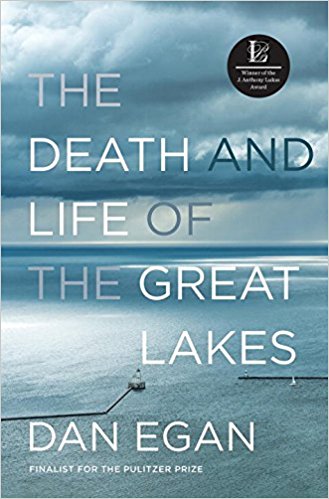 The Death and Life of the Great Lakes, by Dan Egan
The Death and Life of the Great Lakes, by Dan Egan
In this vivid portrait of the Great Lakes – the incredible inland seas that sprawl across the heart of the country – Dan Egan explores one of our most essential ecosystems, our past failures to treasure and protect it, and offers the promise of ways to do better. Its story, of both harm and hope, is ultimately our own story.
Listen to Dan Egan on SciFri and read an excerpt.
This is a deeply affectionate natural history of squids, full of underwater adventure, engaging scientists, and surprising facts about cephalopods. In tracing squid from their days of ocean dominance to today, Staaf, an invertebrate biologist, reminds us that we humans are surrounded by species that deserve more respect than we’ve often given them.
And we asked for your favorite science books of 2017! Here are some of the recommendations.
Hey bookworms! We need your help highlighting the best reads of 2017. What’s your favorite science book that came out this year? pic.twitter.com/ZeBer4JSAJ
— Science Friday (@scifri) December 4, 2017
Big Chicken, by @marynmck! Also, A+ gif-age.
— Jacquelyn Gill (@JacquelynGill) December 6, 2017
“The Quantum Labyrinth” by @phalpern weaves together illuminating explanations of complex concepts and a compelling historical narrative of two giants in 20th Century Physics. My favorite Science book this year provided a unique insight into the lives of Feynman & Wheeler
— Ronan Mehigan (@rmehigan) December 5, 2017
Or The Songs of Trees by @DGHaskell !
— Geri Diorio (@geridiorio) December 5, 2017
I second “The Ends of the World” by Peter Brannen! A captivating and illuminating guide to Earth’s darkest chapters! pic.twitter.com/C218Nhbchf
— Allison Jacobel (@AJacobel) December 6, 2017
Your Brain is a Time Machine: the Neuroscience and Physics of Time by Dean Buonomano It’s a science smorgasbord of amazing insight into the brain creating time and anticipating the future.
— Noelle Culler (@literateck) December 5, 2017
“Why Dinosaurs Matter” by @kenlacovara… learning the past helps us realize how fragile our future might be
— Eddie Guerra (@astroprofeddie) December 6, 2017
We have no idea: https://t.co/2cxs9ljlTP
— Daniel Whiteson (@DanielWhiteson) December 6, 2017
Caesar’s Last Breath by @sam_kean!
— danielle (@d_l_miller) December 7, 2017
Maria Popova is the editor and founder of BrainPickings.org and a MIT Futures of Entertainment Fellow. She is based in Brooklyn, New York.
Deborah Blum is a science journalist & author, the publisher of Undark magazine, and the director of the Knight Science Journalism Program at the Massachusetts Institute of Technology in Cambridge, Massachusetts.
IRA FLATOW: This is Science Friday. I’m Ira Flatow. It has been a long and bumpy road for science in 2017. A few examples– President Trump declares he wants to pull out of the Paris Climate Accord. There’s an advisor to the EPA who believes the air is too clean to breathe. And yes, more reports of sexual harassment in the sciences– this time on Antarctic expeditions.
So maybe the best thing to do this holiday season is to take some time to reconnect with what makes science great– stories of discovery and wonder, the majesty of nature in space. And we’re going to do that by highlighting the best science books of 2017. And joining me to help discuss their top science picks are Deborah Blum, director of the Knight Science Journalism Program at MIT, publisher of the online magazine, Undark, and a Pulitzer Prize winner. Welcome back to Science Friday, Deborah.
DEBORAH BLUM: Thanks. It’s great to be here, Ira.
IRA FLATOW: Nice to have you. Maria Popova is also with us, editor and founder of BrainPickings.org. Always good to have you.
MARIA POPOVA: Always a highlight of my year.
IRA FLATOW: Wow. Now, how can I recover from that? Thank you. Deb, let’s start with you. Which science book got you the most animated this year?
DEBORAH BLUM: Well, I want to talk about Code Girls by Liza Mundy first, because it was a book in which I sort of hounded my husband around the house, saying, let me read you this. Let me read you this. This is really amazing. And the book is a really riveting story of the women who– during World War II– were engaged in the secret cyber, cipher, deciphering of codes of both the Japanese and the German codes.
And one of the things I love about the book is these were school teachers, and actuaries, and factory workers who just had an unusual gift for math, and pattern, and language. They came from small towns all around the country. And they went wholeheartedly into trying, as they sought, save the soldiers abroad– understand what was going on.
And Liza Mundy, who writes this book, does this incredible job of telling the lives of these young women and explaining the sort of pattern recognition in math and technology of code breaking. And I think it speaks to the fact that I’m being a really wonderful person when I say I couldn’t do this. You know, when I was reading these code explanations, I could not have felt dumber. And yet, I just love this book. It was riveting, and exciting, and a little inspiring, start to finish.
IRA FLATOW: You know, it seems like there are a lot of stories like this, right? Coming to light these days about women and code breaking, and finally getting some daylight about what they’ve been doing all these years. What make this one different? Is there anything different about this one?
DEBORAH BLUM: Yeah, that’s a good question. Well, in part, it’s because a lot of the books that have come out recently say Dava Sobel’s wonderful Glass Universe, or even Hidden Figures– which tends to be a book that everyone knows– are about women who were trained as scientists. One of the things I loved about this book was that these were young women who were just smart. And they hadn’t even had the opportunities– many of them– to train in scientists.
And yet, you could see just the sort of spark and crackle of their intelligence. It was all so unrecognized in the same way that we see in some of these other books. There’s a really vivid passage early in this book, when Congress is thinking, the brilliant man of the code cracking units– without a mention of the fact that all these women were there.
And I think the other thing for me is it’s a really great behind-the-scenes look at war. And the technology and science of war, in a way, that is thought-provoking and eye-opening. So I think it worked for me on all of those levels.
IRA FLATOW: Really interesting. Maria, you’ve included a posthumous book of essays by Oliver Sacks.
MARIA POPOVA: Yes, indeed.
IRA FLATOW: It was one of your picks.
MARIA POPOVA: Yeah. And, I mean, I want to also second what you opened with– which is that I have fewer selections this year, because I actually think it’s been a very disappointing year for literature– especially for nonfiction. Because what great science books do– and what Oliver Sacks’ books do, whether they come at it from microbiology or astrophysics– humble us into remembering that we’re just a tiny part of a vast and complex universe.
And instead, what much of nonfiction has done is the opposite– inflate us in our blink of time that is this political moment, into a kind of pre-Copernican self-importance, with all this self-help, and politics, and identity politics, and all the various forms of human selfing. And so it’s lovely to see books that actually celebrate science as a counterpoint to this endemic civilizational self-importance.
And Oliver Sacks has done that for half a century. In this book, it’s a collection of his essays. A few of them have been published before in things like New York Magazine and the New York Times– but some of them, never before. And he worked on them until the very end– essays on memory, and creativity, and Darwin’s love of flowers, and Freud’s little known contributions to neurology.
But it’s also a very personal book for him. Because the thing for which has been so beloved– this kind of friendly curiosity that he takes to his patients– he now turns on himself as he confronts perhaps the hardest parts of existence– aging, and ultimately, dying.
IRA FLATOW: Yeah. I remember him telling me last time I saw him before he died– I think you were there also– he said, I have two more books in me. And you know, you’ll see them after I’m gone, basically. Is this one of them?
MARIA POPOVA: This is one of them. And there’s a collection of his letters in the works, which I’m especially excited about. Because he was such a prolific and beautiful letter writer.
IRA FLATOW: Deb, you have a book on your list that Dr. Sacks might have had a bit of fun reading. It’s called Quackery. What’s that about?
DEBORAH BLUM: Yes. I love this book. So, this is coauthored book by Lydia Kang– who is an Omaha-based MD– and Nate Petersen– who is a librarian in Oregon. And it explores sort of the past history of weird medical cures, and scientific oddities, and the way we try to treat each other. And the examples from it, and the fun that they have with it, you can pick it up at any given moment and go, wow, were we wrong about that?
IRA FLATOW: Give me an example or two of what we were wrong about.
DEBORAH BLUM: So, this one, to me, was hilarious. But back in the 18th century, people were just starting to recognize that tobacco was a kind of pick-me-up stimulant. And so they developed an idea that if people drowned and they would just blow tobacco smoke up their butts, right? That would revive them from drowning death. Actually, they used a bellows. And I started thinking about it later, and I thought, yeah– if you were not quite dead and someone was bellowing hot tobacco smoke up you, it might really wake you up. So you could argue that they at least that a point there.
But it was the kind of thing that I felt myself just laughing out loud when I read it. And this book is fun that way. It has many of these kind of horrible, ridiculous examples.
IRA FLATOW: 26 years of doing this show, I thought I had heard everything.
[LAUGHING]
But you’re blowing smoke now, as they say.
[LAUGHING]
DEBORAH BLUM: And, I–
IRA FLATOW: Yes, go ahead.
DEBORAH BLUM: I do want to say that I’m going to sound more optimistic about this year’s science books. I think that Maria just did, in part because it wasn’t that I said there’s an endless list. But a lot of the books that I looked at this year were books I deeply loved, right? I found myself thinking, man, there are such smart, interesting, talented science writing going on right now. So I’m probably a little more bubbly and excited about the state of this year’s science books.
IRA FLATOW: Let’s move on to Maria.
MARIA POPOVA: Well, that’s actually a really great segue. Because I think we get into the question of standards. And it’s very subjective, it’s very personal. But I think there are plenty of scientists who do a fine job of making science comprehensible and interesting. But there are very, very few who are able to do that and make it enchanting, and even beautiful. And I think Jan Eleven is one of them. The book, Black Hole Blues– which I’m taking a loophole in our selection standards. Because it’s a book that was published last year, though the paperback came out a couple of months ago.
But what merits its inclusion this year– quite apart from the fact that it’s one of the most beautiful books I’ve ever read in my entire life– is that it’s the definitive chronicle of the discovery that won the 2017 Nobel Prize in physics, which is certainly, the most significant discovery in astrophysics in our lifetime– and probably, really, since Galileo– the detection of gravitational waves, the sound of spacetime.
And Janna Levin is– in addition to being one of the preeminent astrophysicists who study black holes– a novelist and really, a beautiful writer. In fact, I consider her– a 2007 novel about Kurt Godel and Alan Turing– one of the great literary masterworks of this century. So she brings this literary sensibility to the story of this colossal half century climb to build this instrument.
And I’m a huge fan of the marine biologist, Rachel Carson, who catalyzed the environmental movement with her book, Silent Spring– whose legacy is being demolished by the present administration. But she wrote about the oceans in a really unusual way that pioneered an aesthetic of poetic prose about science.
And when she received the National Book Award, in her acceptance speech, she articulated this conviction that there is no separate literature of science. Because she said, the aim of science is to discover and illuminate truth, which is also the aim of literature. And Black Hole Blues is one of those rare books– an achievement, really– where that conviction comes through on every page, in every stunning sentence.
IRA FLATOW: Let’s see if we can go to the phones. Got to call in– 844-724-8255 is our number. Let’s go to Groveland, Florida. Ralph, hi. Welcome to Science Friday.
RALPH (ON PHONE): Hi, can you hear me OK?
IRA FLATOW: Yeah, go ahead.
RALPH (ON PHONE): Hi. I have two favorite books. Actually, I just thought of a third one. But I’ll fill in for two. The first one is called Deep Nutrition, by Dr. Cate Shanahan, the nutrition consultant for the Lakers. And–
IRA FLATOW: You’re fading out, there.
RALPH (ON PHONE): Let me try this– how is it now?
IRA FLATOW: Give me your second book.
RALPH (ON PHONE): Hello?
IRA FLATOW: Yes, your second book?
RALPH (ON PHONE): Is that any better?
IRA FLATOW: Yes, much better.
RALPH (ON PHONE): OK, I’m sorry. Did you hear the first one all right?
IRA FLATOW: Let’s go to the second one.
RALPH (ON PHONE): The second one just came out, I think, called Growing A Revolution by David Montgomery. The subtitle of it is Bringing our Soil Back to Life, which talks about how regenerative agriculture can help reverse climate change. It’s fascinating.
IRA FLATOW: Yeah, thanks for that recommendation. Yeah, agriculture is locking up carbon in the soil. We’ve had farmers on who talked about new methods of farming, like growing crops over the winter time, overgrowing, and things like that. And more were kinds of books like that I think will be coming out as we realize that the whole ecosystem is tied together– both human and what’s living in the soil.
MARIA POPOVA: And that is Rachel Carson’s legacy, that knowledge.
IRA FLATOW: Well, let me ask you Maria– let’s talk about a book. You added a children’s book to your list. Do you have a children’s book you want to recommend?
MARIA POPOVA: Yes. It is called Here We Are, Notes for Living on Planet Earth, by Oliver Jeffers– who is one of the most beloved children’s book writers of our time. But this is his most personal picture book. It was inspired by the birth of his own first child, his son. And it’s a kind of primer on Earth, its place in the universe, and what we do on this pale blue dot that we share. And it’s a book that really has the feeling tone of Carl Sagan’s famous pale blue dot monologue.
IRA FLATOW: Interesting. This is Science Friday from PRI, Public Radio International. It’s our annual book show, with Deborah Blum and Maria Popova. Deb, speaking of our pale blue dot, a few of your choices start to form a theme, like American Wolf, Life and Death of the Great Lakes, Squid Empire. Was that intentional?
DEBORAH BLUM: I think that, yes. In part, because it feels like a time in which we are literally looking at this pale blue dot that we do live on– this tiny planet in the vast universe, and say, are we taking good enough care of it? It’s such a rare and precious place. How are we doing as stewards of this amazing planet?
So, I did look at– and I’m going to kind of lump these together in one kind of spread for a minute. American Wolf by Nate Blakeslee is the story of the reintroduction of wolves into Yellowstone. And it’s just so beautifully written. I could not put the book down, even though it explores issues of politics, and science, and natural history, and what it means to bring back an often hated species into an ecosystem. And conflicts between hunters, and scientists, and biologists, and wilderness.
You know, it wraps into this incredible story of wolves and who they are– the story of how we take care of the world around us. And that is reflected in Dan Egan’s book, The Death and Life of the Great Lakes, which I especially love. I know you’ve looked at some of those issues on the show before. But I especially love it, because the Great Lakes are this amazing stretch of inland seas that many of us never see, because we’re clustered on the coasts.
And yet, there’s such a remarkable part of what this country is. And Dan Egan does this incredible job of telling their story at a very human individual level. I mean, he has an incredible gift for detail that will make you say, can we please save these?
IRA FLATOW: Yeah, because I think the Great Lakes are very undercovered, just as environmental subject, as a social place where people live– all kinds of– It’s the perfect fly over country that people don’t talk about.
DEBORAH BLUM: Yeah. That was the phrase that just came into my mind. And yet, if you actually stand on the shores of Lake Michigan or Lake Superior– as you know, I used to live in Wisconsin, which is rammed by both of those lakes– I mean, it’s breathtaking. It’s like standing on the edge of the Atlantic. The sort of power, and beauty, and grace of those bodies of water and their ecological importance.
And this book does justice both to them in that grand scheme, but also in the tiny details. There’s a wonderful bit about zebra mussels. And when this woman scoops up what she thinks are a handful of pebbles, and they start to move across her hand, it’s just like, chilling.
And then, really briefly– because you mentioned Dana Staaf’s Squid Empire– is probably the most historical of the books that I looked at, because it really goes back to the the pre-dinosaur eras in which squids were the monsters of the Earth, and dominated the sea– and then chronicles the gradual evolution into calamari on your dinner plate.
IRA FLATOW: We love cephalopods, as anybody knows on this show. So I’m sorry we have to interrupt. We have to take a break. We’ll come back and talk lots more with Deborah Blum and Maria Popova about our books. If you have a book you’d like to talk about, 844-724-8255. Tweet us @SciFri. we’ll be back right after this break.
This is Science Friday. I’m Ira Flatow. This hour, we are wrapping up the best science books of 2017 with my guests, Deborah Blum, publisher of the online magazine Undark, Maria Popova, editor and founder of BrainPickings.org. Also, taking your calls and your Tweets. Let me go to a couple of Tweets that came in. Leonard Grossman says, the consequences of ignoring science at the core of The Radium Girls, by Kate Moore. He seemed to like that.
And Joe McGonagle says, I just finished reading The Last Man Who Knew Everything. a new enjoyable bio of Enrico Fermi. So kind of interesting picks. Before we left, we were talking about the Great Lakes. And I know, Maria, you wanted to comment about that.
MARIA POPOVA: Yeah. Actually, the first person to write about them at length was Margaret Fuller, the great feminist who wrote Women in the Nineteenth Century. And her first book, called Summer and the Lakes really inspired the 19th century astronomer, Mariah Mitchell, who paved the way for all the code girls and hidden figures.
IRA FLATOW: Oh, is that right?
MARIA POPOVA: Yeah. She was a great fan of that book. And it was always in her library by her bedside.
IRA FLATOW: Wow.
DEBORAH BLUM: That’s wonderful.
IRA FLATOW: Did you know, Deb?
DEBORAH BLUM: I didn’t I think that’s wonderful. And I have to say that every time I listen to Maria talk about books, I start making a list of books that I haven’t read that I must read now.
MARIA POPOVA: Well, I stole one from your list, which I want to ask about. Because I just finished it. If you want to say something, I know you choose The Songs Of Trees, which I too loved. And I would love to hear your thoughts on it.
IRA FLATOW: Go for it.
DEBORAH BLUM: I think part of that thanks is I’ve loved David George Haskell as a writer. And I thought his previous book, The Forest Unseen, was a completely brilliant first book. And this one, I think the way that he does it– where he takes 12 species of trees and uses them to tell the story of us and the way we relate to other species. And again, going back to your point, Ira– about the way we’re taking care of this one planet– he’s a lyrical writer. And I can’t think of anyone I would rather have as an advocate or a voice for trees than David George Haskell.
IRA FLATOW: Well, we have the full list of what we’re talking about in our recommendations at ScienceFriday.com/Books, if you want to keep up with that. And we’ll keep adding to new ones as we go on. OK, let’s go to Tom. Yeah. Let’s go to Tom in St. Augustine, Florida. Hi, Tom.
TOM (ON PHONE): Hi, Ira. I have a great book I read this year, one of the best astrophysics books that I’ve ever read. And I read Popular Science. I’m not a scientist. But this book broke it down so well that I just had to mention it when I heard the topic of your show. It’s called We Have No Idea, A Guide to the Unknown Universe by Jorge Cham and Daniel Whiteson. And they talk about all the things in the universe that we have no idea why they’re there, or if they’re there, or how they work, and their relation to us.
And it’s just full of comedy. Jorge Cham is a comics creator. Daniel Whiteson is an astrophysicist. And these guys are not only very knowledgeable, but they’re also really funny. And it was the easiest book I’ve read on science, and astronomy, and cosmology, and astrophysics, ever.
IRA FLATOW: Just to show you what great taste you have, we’re going to be talking about that book in a few weeks. So it is one of my favorite topics, because we really don’t know anything about what’s out there. And that’s the wonderful part about doing science.
MARIA POPOVA: And I have a kindred selection– which is also a comic– but about the things we do know about the universe, by the theoretical physicist, Clifford Johnson, who– astonishingly enough– took a semester off of his very important astrophysical job to teach himself to draw, and illustrated this book himself. It’s called The Dialogues, Conversations About the Nature of the Universe.
And it’s a kind of visual eavesdropping on very smart people talking about things like dark matter, and string theory, and the multiverse. And the other lovely thing is that it’s populated by really diverse characters of all kinds of ages, races, nationalities. He himself is a black Englishman. And he achieves this in a way that’s totally unforced.
IRA FLATOW: So it’s like a sci-arts book, science and art.
MARIA POPOVA: It is, but it’s a very serious science book.
IRA FLATOW: Yeah. That’s great. We’ve run out of time. Gosh, where did that hour go? I want to thank my guests, Deborah Blum, director of the Knight Science Journalism Program at MIT, and publisher of the online magazine Undark. And Maria Popova, editor and founder of BrainPickings.org. And you all have Twitter accounts also, so we can follow you there. Thank you both for taking time to do this.
MARIA POPOVA: Thank you so much.
IRA FLATOW: Happy holidays to you.
DEBORAH BLUM: Thank you.
Copyright © 2017 Science Friday Initiative. All rights reserved. Science Friday transcripts are produced on a tight deadline by 3Play Media. Fidelity to the original aired/published audio or video file might vary, and text might be updated or amended in the future. For the authoritative record of Science Friday’s programming, please visit the original aired/published recording. For terms of use and more information, visit our policies pages at http://www.sciencefriday.com/about/policies/
Katie Feather is a former SciFri producer and the proud mother of two cats, Charleigh and Sadie.